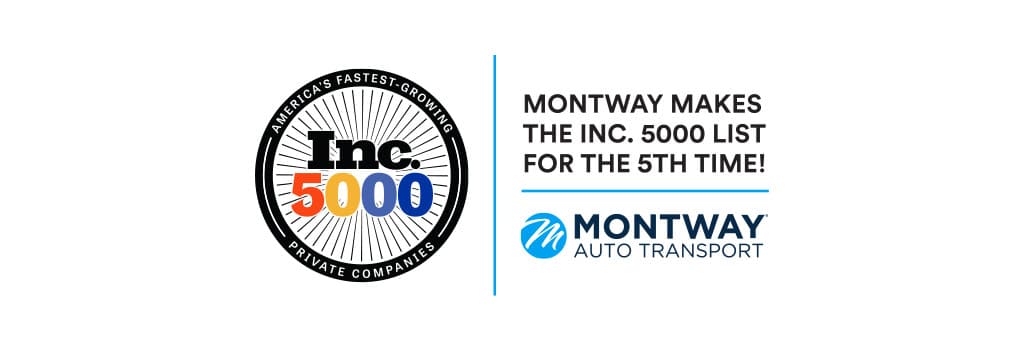Author(s)
Sustainability is a popular topic today across most industries—including transportation. As the automotive industry continues to navigate changing regulations, economic pressures, and market disruptions, creating a more resilient supply chain can impact future success.
According to the EPA, the transportation industry was responsible for 28% of greenhouse gas emissions in 2022. There are likely processes and materials used across your supply chain that create pollution and waste that negatively affect our environment. Thus, there are also ways to develop a more sustainable supply chain in the automotive industry, whether it’s at a dealership, rental car company, moving and relocation company, auction agency, fleet management company, or OEM.
Continue reading to learn why this is a worthy initiative along with simple changes that can make an impact on your automotive supply chain.
The importance of sustainable automotive supply chains
Protects our climate
According to C2ES, one gallon of gasoline produces around 20 pounds of carbon dioxide, or CO2. When more CO2 enters the earth’s atmosphere, it acts like the glass in a greenhouse, trapping the sun’s heat, keeping the planet warmer than it would be without it. This has many negative effects on the way we live, including more severe weather, more wildfires, and longer periods of drought, which leads to limited water supply and a lower yield of crops. Implementing a greener supply chain means you’re doing your part to safeguard our climate by being more efficient and lowering gas emissions.
Reduces operating costs
Making the move toward lowering your carbon footprint also has a direct benefit to your business. The State of Sustainable Fleets report highlights the necessity of clean technology and how renewable fuels and advanced technology can lay the groundwork for future sustainable fleet expansion. Using equipment more efficiently also means it needs fewer and less frequent repairs, which can reduce expenses.
Positions you as a leader in your industry
Failure to keep up with advances in sustainable supply chain practices in the automotive industry may cause your business to lose ground to your competitors. According to a previous Sustainable Fleets report, 98% of fleets expect to enhance or maintain the use of sustainable vehicles and fuels.
Rather than keeping up, get ahead and be at the forefront of change and innovation. Positioning yourself as an industry leader will attract more customers no matter which sector of the automotive industry you’re in. Auto dealers, auctions, OEMs, and rental car companies all have an opportunity to enhance their standing in their unique markets.
Roadmap to a more sustainable automotive supply chain
Improving your sustainability may seem like an extensive—and expensive—project, but following these steps will make the process more manageable.
1. Assess your current emissions
To make a change, you must first understand your current state. Examine every touchpoint in your supply chain and identify where emissions and waste are coming from. This could include the following:
- Electricity
- Gasoline as fuel
- Heat
- Water
- Paper products
- Other raw materials
Keep a thorough record of these and share it with the appropriate parties within your company so everyone is involved in the change project.
2. Set goals and priorities
Go through your list one by one to identify areas you can afford to improve. Prioritize what you think can be done fastest and most easily first, moving down to the most time-consuming and costly initiative. Chances are, each item you want to change will require smaller steps and goals to achieve, so include those as well.
But rather than simply writing these down and “getting to them” when you can, create specific and realistic deadlines for accomplishing each goal. Include potential obstacles as well so you and other stakeholders in the project are prepared.
3. Implement ways to reduce emissions
There are many ways you can make your business more environmentally friendly. Keep in mind that not all of these may be applicable for your specific industry and supply chain processes, but some things we suggest would be:
- Incorporate electric vehicles for shorter routes and/or smaller loads
- Optimize driving routes to reduce miles traveled
- Recycle vehicle parts and other equipment once they’ve reached end of life
4. Consider automotive remanufacturing
Automotive remanufacturing restores used parts to like-new conditions, meeting OEM specifications to ensure they function as originally designed. This practice has been in use for decades but has become a key strategy in today’s sustainability plans.
While this approach requires a greater investment of time and resources than other strategies, it is proven to be effective in the long-term. Not only does remanufacturing help reduce CO2 emissions and energy use, it improves operational efficiency by reducing production time and conserving resources.
For many businesses, it’s not practical to adopt remanufacturing right away. Consider this process to be a long-term goal while your business implements smaller changes that are within its means today.
5. Unite your supply chain
It’s also critical to look for areas in your supply chain to streamline and break down the silos that often develop. Every employee across the chain should have a 360-degree view of the process, knowing how their work impacts others’ and vice versa. Seeing themselves as part of the entire supply chain and not just a single function of it will build unity and help to prevent costly delays and inefficiencies.

New technologies designed to identify and improve inefficiencies have been introduced to virtually every industry. With a little research you’re sure to find a solution that will work with your business and budget. For instance, telematics technology uses GPS and on-board diagnostics to monitor trucks, equipment, and other assets. There are also predictive maintenance technologies to help you take action to keep equipment running properly and avoid repairs.
Dealerships, rental car companies, automobile manufacturers, and other businesses can also use the services of a third-party logistics company to transport vehicles to their destination. Instead of investing in their own trucks and trailers, they can leverage auto transport companies that are experts in the logistic services needed and potentially save on transit times, emissions, and costs.
Simple approaches to a greener automotive supply chain
We realize that not all companies have the funds, resources, or manpower to take on a sustainability initiative but that doesn’t mean you can’t make improvements. These four actions are a quick and easy place to start to reduce waste within your business.
Go paperless
Change is hard, but keeping all records on paper is wasteful, inefficient, and susceptible to loss or even theft. Moving to digital records keeps both internal and external documentation organized and protected, saves money on paper supplies, eliminates paperwork and filing, and prevents more trash from ending up in a landfill.
Consider the products and services you use
With “going green” being a widespread effort, there are endless options for more eco-friendly products to use in your workplace, like cleaning products and packaging. They don’t cost much more than regular products and can still make a difference in your impact on the environment. If you use third-party companies for transportation, cleaning, or other services, look for ones that also use sustainable practices.
Be proactive
Finally, being proactive with maintenance keeps vehicles and equipment in top working condition, reducing the likelihood of a breakdown. Plus, overdue tire rotation and inflation, oil changes, and engine air filter replacement can all negatively impact fuel efficiency. Routine maintenance is all it takes to lower emissions and save money.
Regular safety reviews with your staff also make a difference. Not only will it help to keep them safe, it will also result in fewer collisions, misuse of equipment, and as a result, fewer repairs and materials used.
Sustainable automotive supply chains are not a passing trend
Reducing your carbon footprint will always be in style. Taking steps to mitigate your negative impact on the environment saves you money on fuel and repairs, and sheds a positive light on your business. It’s a win for you, your employees, your customers, and the planet.
The Montway advantage
Montway Auto Transport can help you identify opportunities for increased efficiencies in your vehicle movements. Even when single-unit transport is needed, Montway optimizes the move to provide the value you need and the speed you demand. We have nearly 20 years of experience working with dealerships, auctions, rental car companies, manufacturers, fleet managers, corporate relocation companies, and lenders. Learn more about Montway Auto Transport’s business solutions at Montway.com/logistics or call 888-998-4161.








